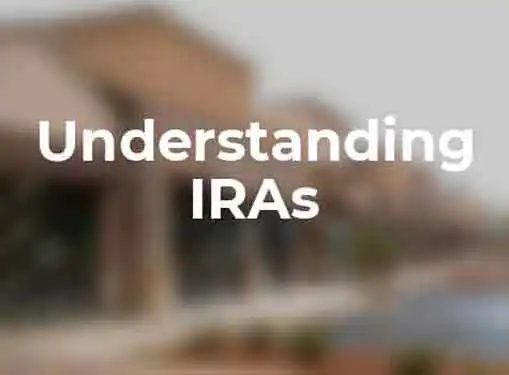Business Finance
Understanding IRAs - Traditional Individual Retirement Accounts
Written by Bennet Grill for Gaebler Ventures
An Individual Retirement Account, or IRA, is a type of account which allows investors to contribute to their retirement through a beneficial tax structure. IRAs may be started by employees or employers and have a variety of different structures and applications. This article reviews what is known as the Traditional IRA.
A Traditional IRA is the original account introduced by The Employee Retirement Income Security Act (ERISA) of 1974.

The word "traditional" is a relatively modern term which distinguishes the original IRA from the other forms of IRAs that have been introduced since 1974.
Originally, Individual Retirement Accounts were only allowed for workers who were not covered by a qualified pension plan under their employer--it was the government's way of providing a tax benefit to those who were planning on saving for their retirement. The original contribution level was $1,500 per year.
In 2008, workers who are covered by an employer's pension plan are allowed to contribute to an IRA, but there are some restrictions. If you are covered by a retirement plan at work and filing a joint return with a modified AGI greater than $85,000 but less than $105,000, your tax deductible contributions will be phased out.
The same goes for single filers with a modified AGI of between $53,000 to $63,000. If you are not covered by a retirement plan at work and are filing a joint return, you are eligible for tax deductible contributions with a modified AGI of up to $169,000.
As long as you are under the age of 70 ½, you are allowed to make contributions to an IRA. In 2008, the upper cap for contributions was $5,000 a year. If you are over the age of 50, you are allowed to contribute a "catch-up" amount of $6,000 per year. You are eligible to withdraw funds from your IRA at the age of 59 ½. If you withdraw funds before this age, you are subject to a 10% early distribution penalty.
Funds contributed to a Traditional IRA qualify as a tax deduction, but these same funds, plus interest, will be taxed at as ordinary income upon retirement (redemption of the funds.)
When you reach the age of 70 ½, you are required to begin drawing distributions from your IRA account. If you fail to withdraw the calculated minimum distribution (provided by the IRS,) the IRS automatically confiscates half of the remaining mandatory distribution amount.
IRAs allow what are called qualified distributions, which are funds withdrawn before the age of 59 ½ but are not subject to the 10% additional tax. Qualified distributions include up to $10,000 for the purchase of a new home or money used to pay for higher education expenses for an individual or his spouse, or any subsequent children or grandchildren.
Traditional IRAs are a great way to save for retirement with tax deductible contributions. To learn more about alternative IRA solutions, read about Roth IRAs, SEP and Simple IRA plans, and Education IRAs.
Bennet Grill is a writer who has a passion for business and finance. He is currently an Economics major at Duke University in North Carolina.
Share this article
Additional Resources for Entrepreneurs




Conversation Board
What's your take on traditional IRAs?